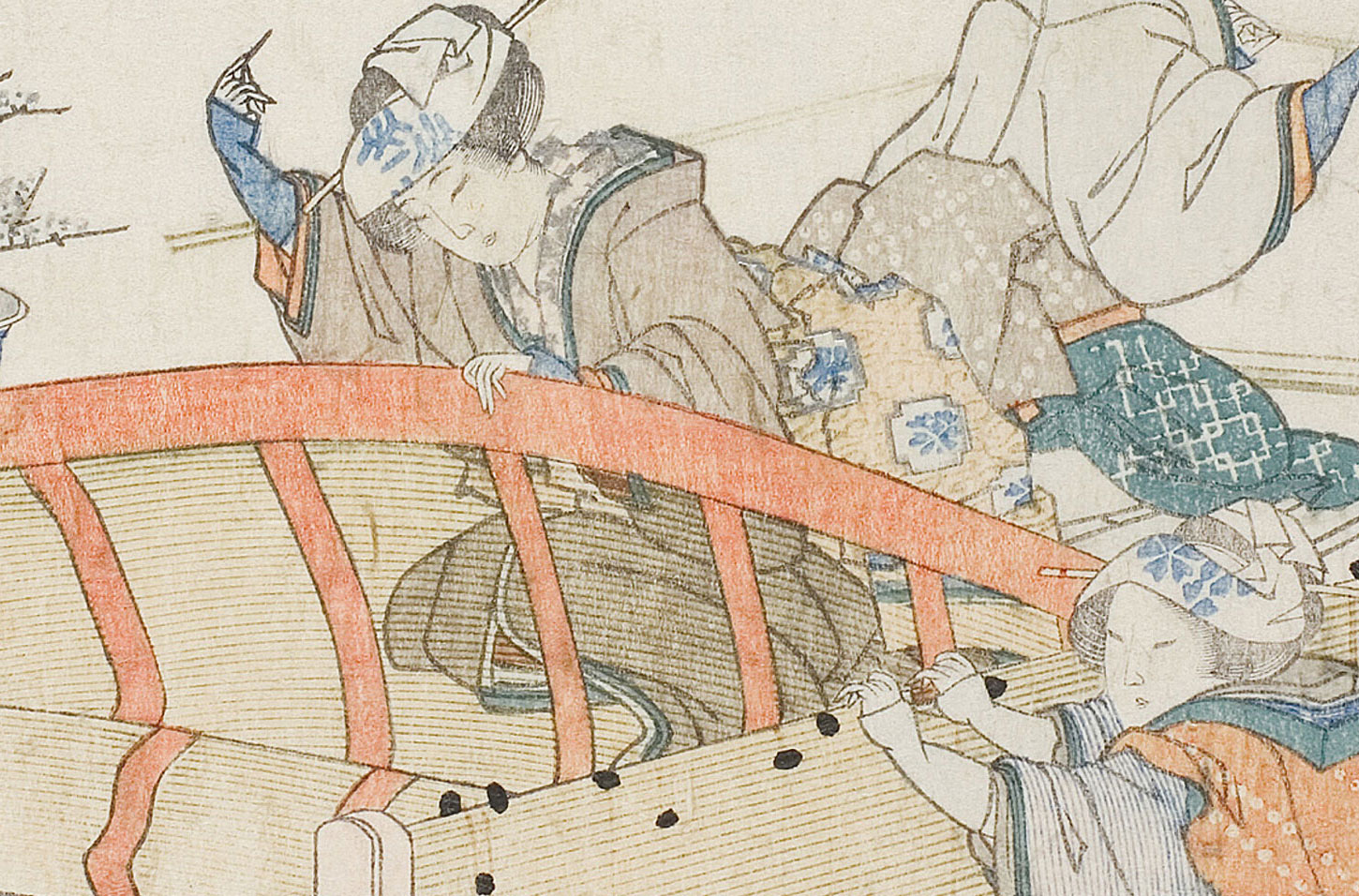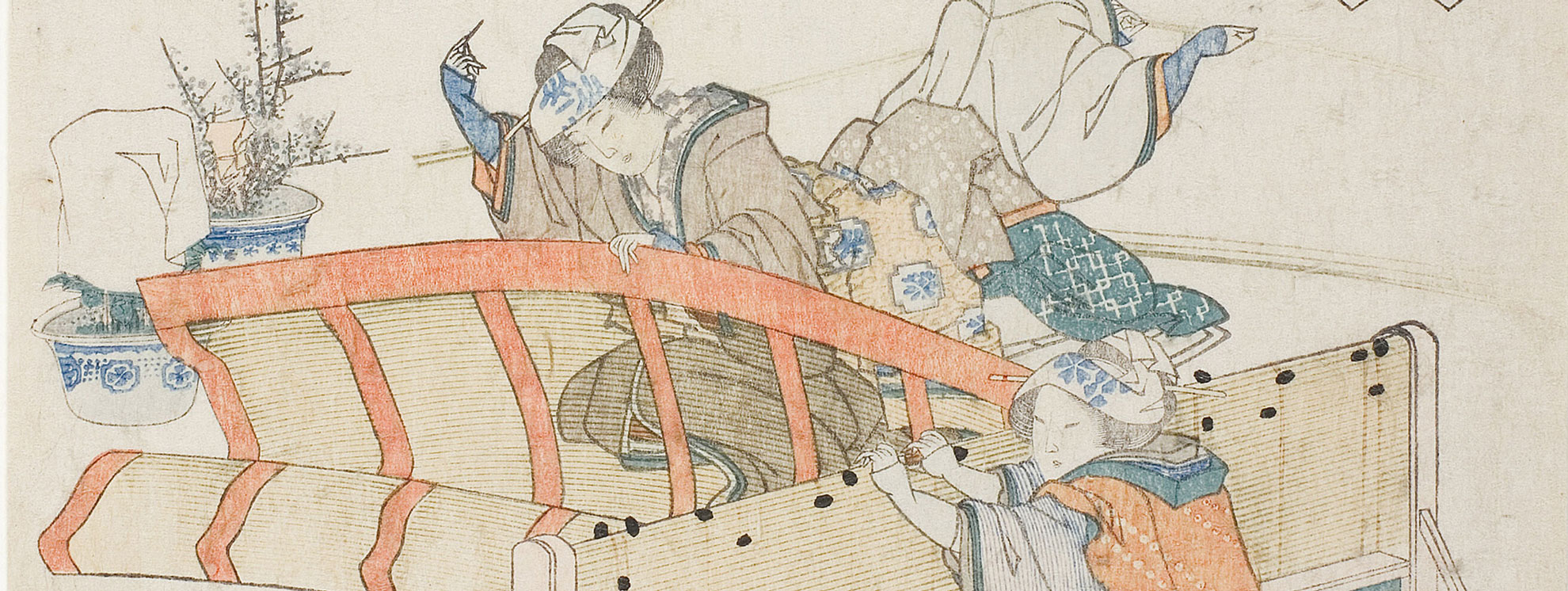The traditional Sudare


1816-1833. The Art Institute of Chicago.
Characteristics and traditional manufacturing process of Sudare
Bamboo is one of the most used natural materials in Japan thanks to its diffusion in the territory. It is used as construction material, to fabricate kitchen accessories, as a decorative item. The traditional handicrafts tied to bamboo are indeed more developed in regions where extensive plantations can be found, and each one of them evolved with specific characteristics. Sudare specialists are found particularly in the Kyoto region, near Fukuoa, on the Isle of Kyushu.
Sudare are made from bamboo stems: they are cut into strips which are carefully rolled into thin cylindrical straws of a few millimeters in diameter, then sewn together with cotton and sometimes silk thread. This is a job that demands expertise, experience and accuracy: the artisan must place the straws one by one, alternating their placement so they will balance each other’s natural curvatures. The artisan’s skill is also essential to align the natural knots of the bamboo to form a vertical wave pattern.
IThe thin spaces between the bamboo sticks allow for dimmed light to pass through and for air to circulate while shielding the indoor spaces from outdoor heat. Sudare are made flexible enough to be rolled up, while they provide privacy inside the room when rolled down.
Elegant Sudare are usually framed around the edges with a decorative trim in brocade or damask, they have elaborate cording with tassels and engraved metal hooks to hold the blinds rolled open.
Explore the gallery with some of my projects.

Sudare in history
Sudare has a very ancient history, dating back centuries. Bamboo screens and blinds have been used indoor as partitions or shades since the middle of the Heian period, the peak of the Japanese imperial court running from 794 to 1185.
In palaces elaborated Sudare were made with high-quality bamboo, decorated with expensive silk. A court lady would hide behind them when speaking with a man, as narrated in the novel Genji Monogatari ("The Tale of Genji"), written in the 11th century by Murasaki Shikibu, a court lady herself: she could see through the thin sticks without being seen, not until the man was allowed to step closer or she decided to raise the screen.
Similarly, during imperial audiences the ruler would sit hidden behind a Sudare in the throne hall, with only his shoes showing, as it was forbidden to look directly at him.
In temples, Sudare were used as as partition walls for each monk's room, creating separate areas from a common space. They can be found in some historic tea rooms.
They were also hanged on the sides of kago, a kind of palanquin used as a means of transportation until the end of the 19th century, protecting its inside.

Sudare in Japanese art prints
Sudare are depicted in many ukiyo-e, woodblock prints that flourished in the Edo period (from the 17th century) and were central in the late 19th century to forming the West's perception of Japanese art.
Thanks to these kind of art prints I first noticed bamboo blinds and screens.




























































